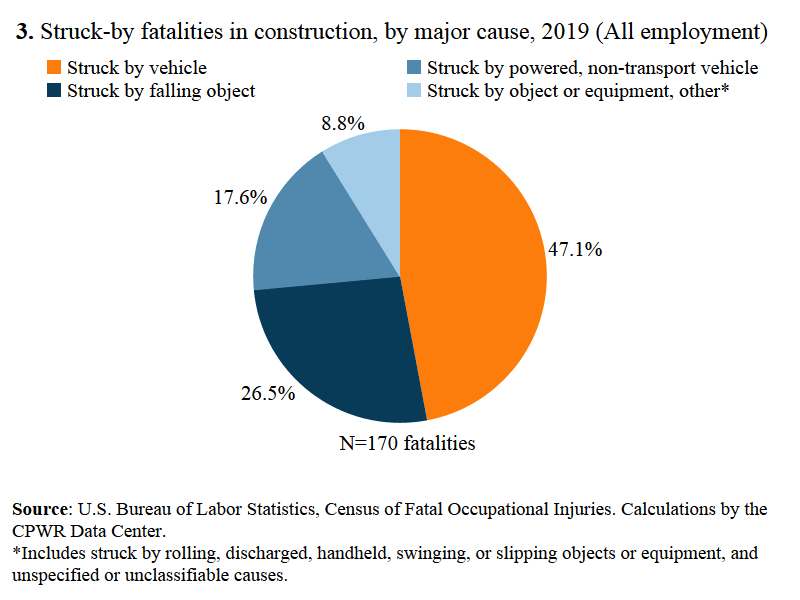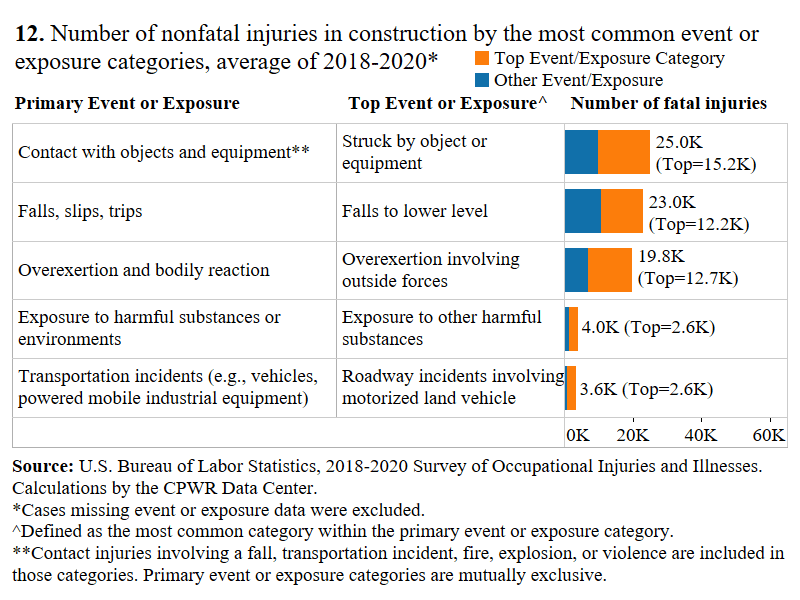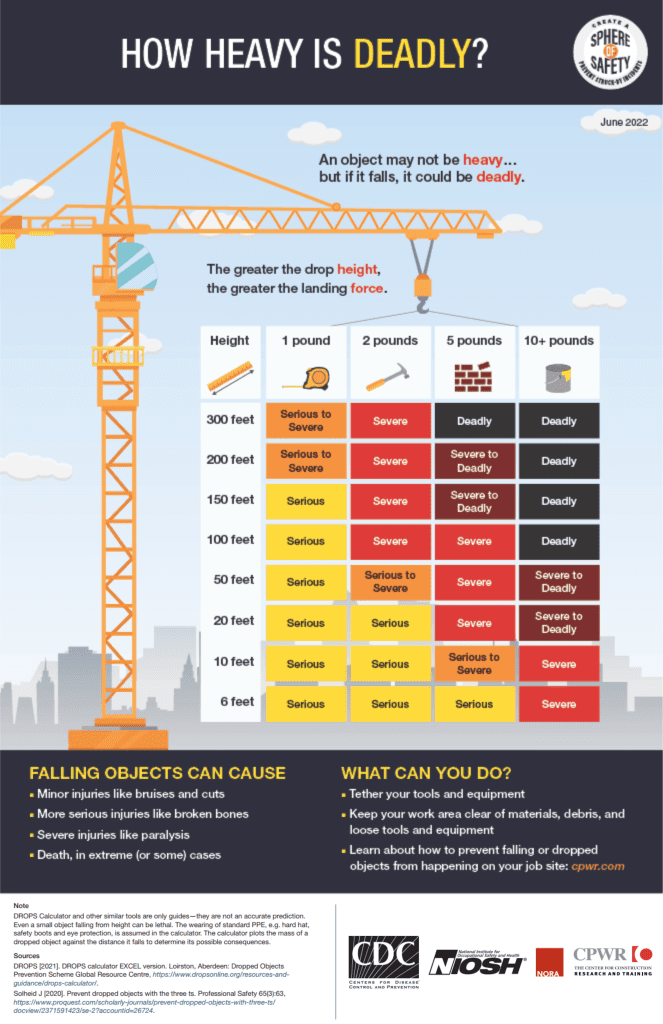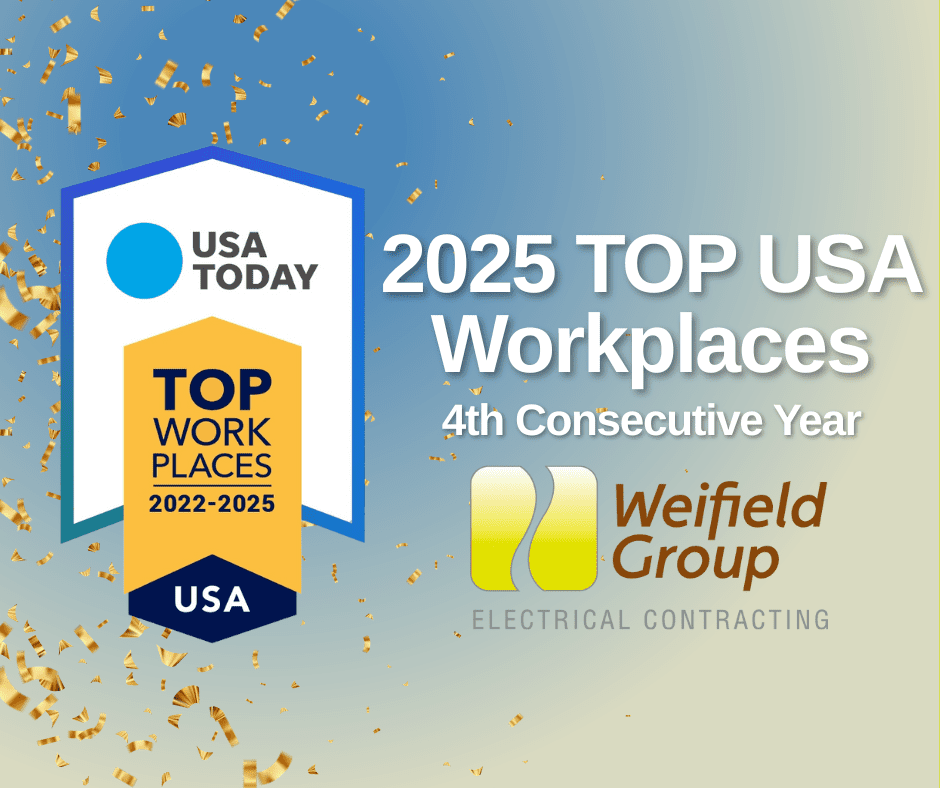The Data Behind Struck-By Injuries in Construction
Struck-by injuries occur when a person is violently hit by an object or piece of equipment. These incidents can be fatal—and even when not life-threatening, they often result in lost workdays due to recovery time. To help prevent struck-by injuries, companies are encouraged to participate in a stand-down—a voluntary event where employers talk directly with employees about safety. This year marks the 4th annual National Stand-Down to Prevent Struck-by Incidents. Understanding the scope of these injuries and available prevention solutions is essential to reducing the number of incidents each year.
In 2020, occupational struck-by incidents caused 150 deaths and 14,000 nonfatal injuries in the construction sector. These injuries resulted in $1.4 billion in workers’ compensation direct costs for nonfatal claims requiring more than five days off work. According to an April 2021 CPWR Data Bulletin, fatalities from being struck by objects or equipment occurred more frequently (76–113 per year) than those from being struck by vehicles (66–87 per year) between 2011 and 2014.
In 2019, struck-by incidents by vehicles accounted for 47% of all construction fatalities, while struck-by incidents by a falling object accounted for 27% of the struck-by fatalities in the same year. Between 2018 and 2020, interaction with objects and equipment was a key source of nonfatal injuries, with injuries caused directly by striking an object or equipment being the most common averaging approximately 15,200 annually.


Falling objects present a major struck-by risk on job sites. Tools, materials, and equipment can fall from roofs, cranes, and scaffolds—but even items falling from lower levels (like truck beds or dollies) can cause serious harm. Factors that increase injury severity include the object’s shape, the area of the body struck, the height of the fall, and the object’s weight. Injury severity rises with greater height and weight. The infographic “How Heavy is Deadly” illustrates the dangers of falling objects.
Understanding Struck-By Injuries in Construction
In 2022, CPWR conducted a survey to better understand how to reduce struck-by incidents through effective research-to-practice methods.
Out of 208 construction workers surveyed:
- 45% worked in commercial construction
- Nearly 75% worked for a contractor
- Almost 90% had over 10 years of experience
Top reported causes of struck-by injuries:
- Working around heavy equipment or vehicles (36%)
- Falling/flying objects from work performed at heights (30%)
- Falling/flying objects from work on the same level (19%)
The survey also revealed differences between employer and worker perspectives on prevention barriers:
Top employer-reported barriers:
- Lack of understanding how to address the hazard (27%)
- Scheduling pressures (26%)
- Lack of hazard identification and prevention training (23%)
Top worker-reported barriers:
- Lack of pre-task planning (30%)
- Too much emphasis on production (22%)
- Lack of training (20%)
- Lack of management commitment (12%)
Recognizing both worker and employer perspectives helps safety professionals identify and address common gaps in prevention strategies.
Despite the challenges, 71% of respondents said their company already includes struck-by prevention in their project planning. The top three planning strategies cited were:
- Conducting job hazard analyses (JHAs) before work begins (91%)
- Conducting JHAs periodically when new tasks or work types start (83%)
- Holding pre-shift job site meetings to review struck-by hazards, safety practices, equipment use, signage, and points of contact (80%)
When it comes to preferred training strategies, 78% of respondents said training on how to identify and prevent struck-by hazards would be most effective, 73% recommended training on how to conduct job hazard analyses, and 61% pointed to sharing real-world examples of successful prevention from other job sites.
Communication tools like toolbox talks and hazard signage at entrances or near danger zones were also recommended to help raise awareness on construction sites. Let’s work together to overcome common barriers and take action to prevent these incidents before they occur.
Until next time…Work Safe & Be Safe!





